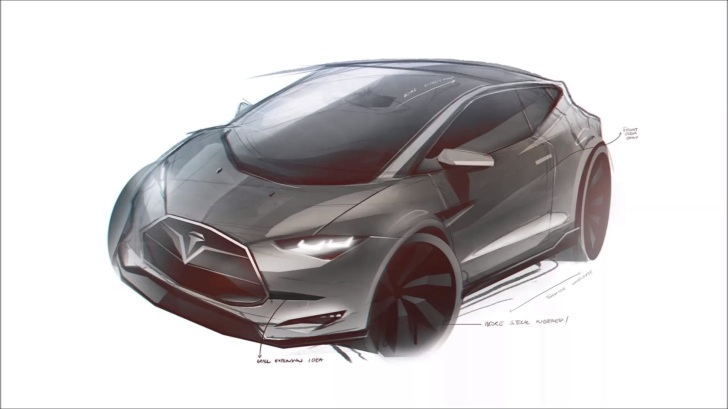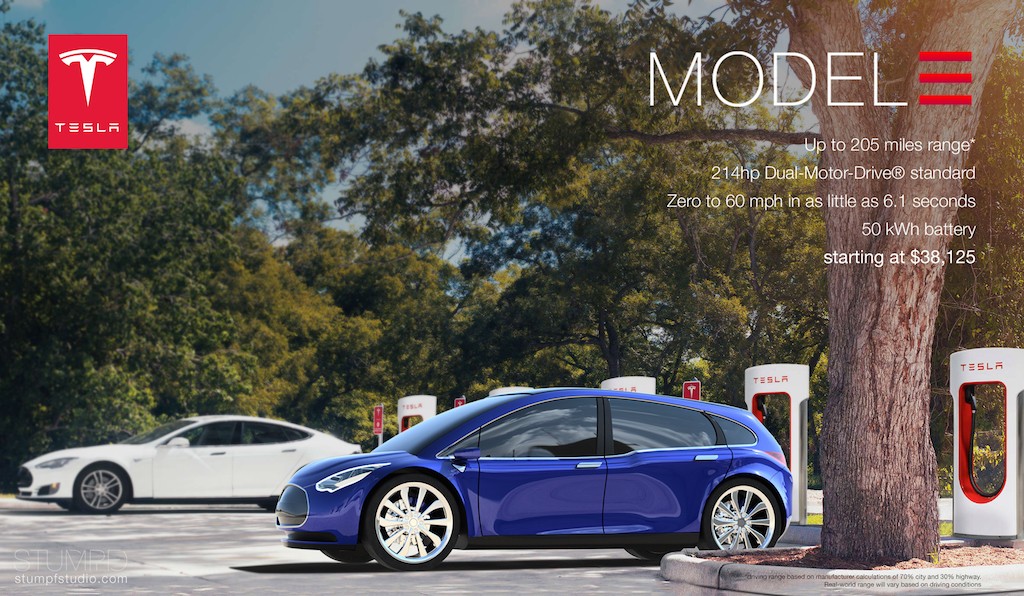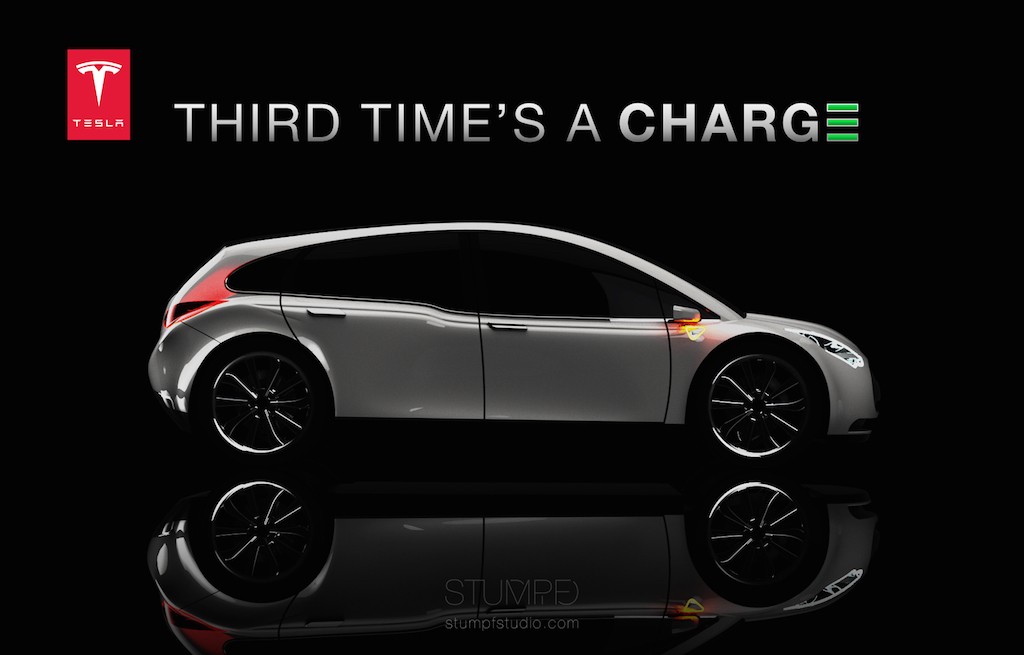News
What We Know About the Tesla Model 3 and What We Don’t
We have some idea about the size and features of the upcoming Tesla Model III. What we don’t know is what it will look like or how much it will cost.

Tesla has been tight lipped about the Model 3 that is in the works. Elon Musk says it won’t look like any other car on the road, but what does that mean? Will it have 6 wheels or a raised seating platform so drivers can look down on the other, more mundane cars on the road? For guidance, we need to look at the words of Elon Musk himself.
Here’s what we know about the Tesla Model 3:
1. The Model 3 will be about 20% smaller than the Model S, says Musk. But in typical faction, he adds a hook to that statement. “One easy thing to do would be to make a 20 percent smaller Model S. That would be easy to do, but I think we might be able to do a few more interesting things than just that.”
2. It will probably be powered by the smaller of the two motors currently used by the Model S. “That smaller drive unit in many ways is a precursor for the Model 3. Because it represents a significant improvement in cost, and in steady state power, and a number of other factors. It’s a second generation motor, essentially, and that’s a good pathfinder for Model 3 on the powertrain side.”
3. It will have two separate versions, but not right away. “There are things we could do with the Model 3 platform that are really adventurous but would put the schedule at risk. So what we’re going to do is have something that’s going to be an amazing car, but it won’t be the most adventurous version the Model 3 to begin with. But we will then have the more different version of the Model 3, on the Model 3 platform, following the initial version.”
RELATED >>> Affordable Tesla Model 3 will utilize steel construction
4. It will arrive on time. Tesla seems to have learned from the on again/off again scheduling of the Model X that it is important to get this car to market when promised. A concept version of the Model 3 is expected to appear early in 2016. “We don’t want the delays that affected the X to affect the Model 3. We’re really being quite conscientious about this.”
Here’s what we don’t know:
1. What will the Model 3 look like? Stumpf Studio has released some design studies that may — or may not — offer clues to the appearance of the Model 3. Auto Moto has also floated its notion of what the Tesla Model 3 might look like on the internet. Bear in mind that neither are officially sanctioned by Tesla, even though the Stumpf Studios efforts include the official company logo. The Auto Moto concept incorporates some of the design language of the latest Jaguar F Type coupe, especially at the rear.
The one thing everyone seems to agree on is that the car will be a hatchback. Partly that’s because the Model S and the Model X have hatches and partly that’s because a a smaller car almost begs for a hatch in order to allow families to fit all their stuff inside.

One enthusiast’s rendition of what a Tesla Model 3 compact may look like. (Source: Autoevolution.com)
2. How much will the Model 3 cost? Elon Musk has said that Tesla will be selling “millions” of cars in a few years. But it won’t be selling millions of its Model S cars, despite the fact that the Model S is a wonderful automobile. Tesla needs a moderately priced car if it hopes to become a volume seller.
As far as anyone knows, the Model 3 is the car that will make Tesla a leader in the car business. That means getting the pricing right is critical to the company’s future. It is widely believed that the Model 3 will have about 200 miles of range and sell for around $35,000 after all federal and state incentives. But is that realistic?
One skeptic, Menahem Anderman, predicts Tesla will have to charge at least $50,000 for the Model 3 in order to make money. Anderman is not some flake. He has organized the Advanced Automotive Batteries Conference for almost two decades now.
3. When will it arrive? There are rumors that a concept car will appear in the spring of 2016, with production beginning sometime in 2017. But Elon Musk, despite his many good qualities, has always been overly optimistic about when Tesla products will be market ready. The Model S was almost two years late arriving and the Model X has had numerous delays.
How accurate is that “sometime in 2017” prediction for the Model 3? That’s anybody’s guess. One thing is for certain, though. The Model 3 will probably not feature anything resembling the “falcon wing” doors that are the trademark of the Model X.
Source: CleanTechnica

Elon Musk
Elon Musk and Tesla AI Director share insights after empty driver seat Robotaxi rides
The executives’ unoccupied tests hint at the rapid progress of Tesla’s unsupervised Robotaxi efforts.

Tesla CEO Elon Musk and AI Director Ashok Elluswamy celebrated Christmas Eve by sharing personal experiences with Robotaxi vehicles that had no safety monitor or occupant in the driver’s seat. Musk described the system’s “perfect driving” around Austin, while Elluswamy posted video from the back seat, calling it “an amazing experience.”
The executives’ unoccupied tests hint at the rapid progress of Tesla’s unsupervised Robotaxi efforts.
Elon and Ashok’s firsthand Robotaxi insights
Prior to Musk and the Tesla AI Director’s posts, sightings of unmanned Teslas navigating public roads were widely shared on social media. One such vehicle was spotted in Austin, Texas, which Elon Musk acknowleged by stating that “Testing is underway with no occupants in the car.”
Based on his Christmas Eve post, Musk seemed to have tested an unmanned Tesla himself. “A Tesla with no safety monitor in the car and me sitting in the passenger seat took me all around Austin on Sunday with perfect driving,” Musk wrote in his post.
Elluswamy responded with a 2-minute video showing himself in the rear of an unmanned Tesla. The video featured the vehicle’s empty front seats, as well as its smooth handling through real-world traffic. He captioned his video with the words, “It’s an amazing experience!”
Towards Unsupervised operations
During an xAI Hackathon earlier this month, Elon Musk mentioned that Tesla owed be removing Safety Monitors from its Robotaxis in Austin in just three weeks. “Unsupervised is pretty much solved at this point. So there will be Tesla Robotaxis operating in Austin with no one in them. Not even anyone in the passenger seat in about three weeks,” he said. Musk echoed similar estimates at the 2025 Annual Shareholder Meeting and the Q3 2025 earnings call.
Considering the insights that were posted Musk and Elluswamy, it does appear that Tesla is working hard towards operating its Robotaxis with no safety monitors. This is quite impressive considering that the service was launched just earlier this year.
Elon Musk
Starlink passes 9 million active customers just weeks after hitting 8 million
The milestone highlights the accelerating growth of Starlink, which has now been adding over 20,000 new users per day.

SpaceX’s Starlink satellite internet service has continued its rapid global expansion, surpassing 9 million active customers just weeks after crossing the 8 million mark.
The milestone highlights the accelerating growth of Starlink, which has now been adding over 20,000 new users per day.
9 million customers
In a post on X, SpaceX stated that Starlink now serves over 9 million active users across 155 countries, territories, and markets. The company reached 8 million customers in early November, meaning it added roughly 1 million subscribers in under seven weeks, or about 21,275 new users on average per day.
“Starlink is connecting more than 9M active customers with high-speed internet across 155 countries, territories, and many other markets,” Starlink wrote in a post on its official X account. SpaceX President Gwynne Shotwell also celebrated the milestone on X. “A huge thank you to all of our customers and congrats to the Starlink team for such an incredible product,” she wrote.
That growth rate reflects both rising demand for broadband in underserved regions and Starlink’s expanding satellite constellation, which now includes more than 9,000 low-Earth-orbit satellites designed to deliver high-speed, low-latency internet worldwide.
Starlink’s momentum
Starlink’s momentum has been building up. SpaceX reported 4.6 million Starlink customers in December 2024, followed by 7 million by August 2025, and 8 million customers in November. Independent data also suggests Starlink usage is rising sharply, with Cloudflare reporting that global web traffic from Starlink users more than doubled in 2025, as noted in an Insider report.
Starlink’s momentum is increasingly tied to SpaceX’s broader financial outlook. Elon Musk has said the satellite network is “by far” the company’s largest revenue driver, and reports suggest SpaceX may be positioning itself for an initial public offering as soon as next year, with valuations estimated as high as $1.5 trillion. Musk has also suggested in the past that Starlink could have its own IPO in the future.
News
NVIDIA Director of Robotics: Tesla FSD v14 is the first AI to pass the “Physical Turing Test”
After testing FSD v14, Fan stated that his experience with FSD felt magical at first, but it soon started to feel like a routine.

NVIDIA Director of Robotics Jim Fan has praised Tesla’s Full Self-Driving (Supervised) v14 as the first AI to pass what he described as a “Physical Turing Test.”
After testing FSD v14, Fan stated that his experience with FSD felt magical at first, but it soon started to feel like a routine. And just like smartphones today, removing it now would “actively hurt.”
Jim Fan’s hands-on FSD v14 impressions
Fan, a leading researcher in embodied AI who is currently solving Physical AI at NVIDIA and spearheading the company’s Project GR00T initiative, noted that he actually was late to the Tesla game. He was, however, one of the first to try out FSD v14.
“I was very late to own a Tesla but among the earliest to try out FSD v14. It’s perhaps the first time I experience an AI that passes the Physical Turing Test: after a long day at work, you press a button, lay back, and couldn’t tell if a neural net or a human drove you home,” Fan wrote in a post on X.
Fan added: “Despite knowing exactly how robot learning works, I still find it magical watching the steering wheel turn by itself. First it feels surreal, next it becomes routine. Then, like the smartphone, taking it away actively hurts. This is how humanity gets rewired and glued to god-like technologies.”
The Physical Turing Test
The original Turing Test was conceived by Alan Turing in 1950, and it was aimed at determining if a machine could exhibit behavior that is equivalent to or indistinguishable from a human. By focusing on text-based conversations, the original Turing Test set a high bar for natural language processing and machine learning.
This test has been passed by today’s large language models. However, the capability to converse in a humanlike manner is a completely different challenge from performing real-world problem-solving or physical interactions. Thus, Fan introduced the Physical Turing Test, which challenges AI systems to demonstrate intelligence through physical actions.
Based on Fan’s comments, Tesla has demonstrated these intelligent physical actions with FSD v14. Elon Musk agreed with the NVIDIA executive, stating in a post on X that with FSD v14, “you can sense the sentience maturing.” Musk also praised Tesla AI, calling it the best “real-world AI” today.










